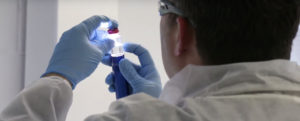 Improving Visual Inspection Practices, written by Jennifer Markarian with Pharmaceutical Technology, she interviews John Shabushnig, PhD and talks about the need of improving the understanding and practice of visual inspection of parenteral drugs. Their interview gives guidance of where to search for help, as well as what is recommended. PDA and USP have been working together to set guidelines and best practices for drug companies; leading them to improve the quality and reduce recalls of parenteral drugs.
Improving Visual Inspection Practices, written by Jennifer Markarian with Pharmaceutical Technology, she interviews John Shabushnig, PhD and talks about the need of improving the understanding and practice of visual inspection of parenteral drugs. Their interview gives guidance of where to search for help, as well as what is recommended. PDA and USP have been working together to set guidelines and best practices for drug companies; leading them to improve the quality and reduce recalls of parenteral drugs.
USP (United States Pharmacopeia) created Chapter<790> ‘Visible Particulates in Injections’ to help guide others with following the same criteria/ reference of Visible Inspection of parenteral drugs. This will help all drug manufactures have a similar drug approval process. Having parenteral drugs “essentially free” of particles has now been defined in USP <790>. This clarification has greatly improved the Visual Inspection Process; making all inspections from everywhere uniform.
Some challenges that were brought to attention were the concerns of the visual inspection process. It is stated that caution must be taken when swirling the product so the therapeutic proteins do not get damaged. There is concern for high-speed spins, because it could damage the drug molecule and make the particle appear smaller than it originally was. Another issue of concern are the “inherent” particles. Inherent particles are part of the formulation; these particles could be acceptable oppose to extrinsic particles. This could be an extreme difference between a pass or reject on a drug.
The Identifier system will significantly improve informed product acceptance or rejection decisions. This expert system is the first to fill the defect monitoring gap across the visual inspection, particulate and physical defect control lifecycle of sterile products and devices. The digital platform consolidates defect management and inspection qualification data meeting cGMP regulatory expectations. Process data is readily available, in real time, to authorized users, manufacturing and quality personnel across an organization.
To learn more about Visual Inspection Practices, read the full article on Pharmtech.com

